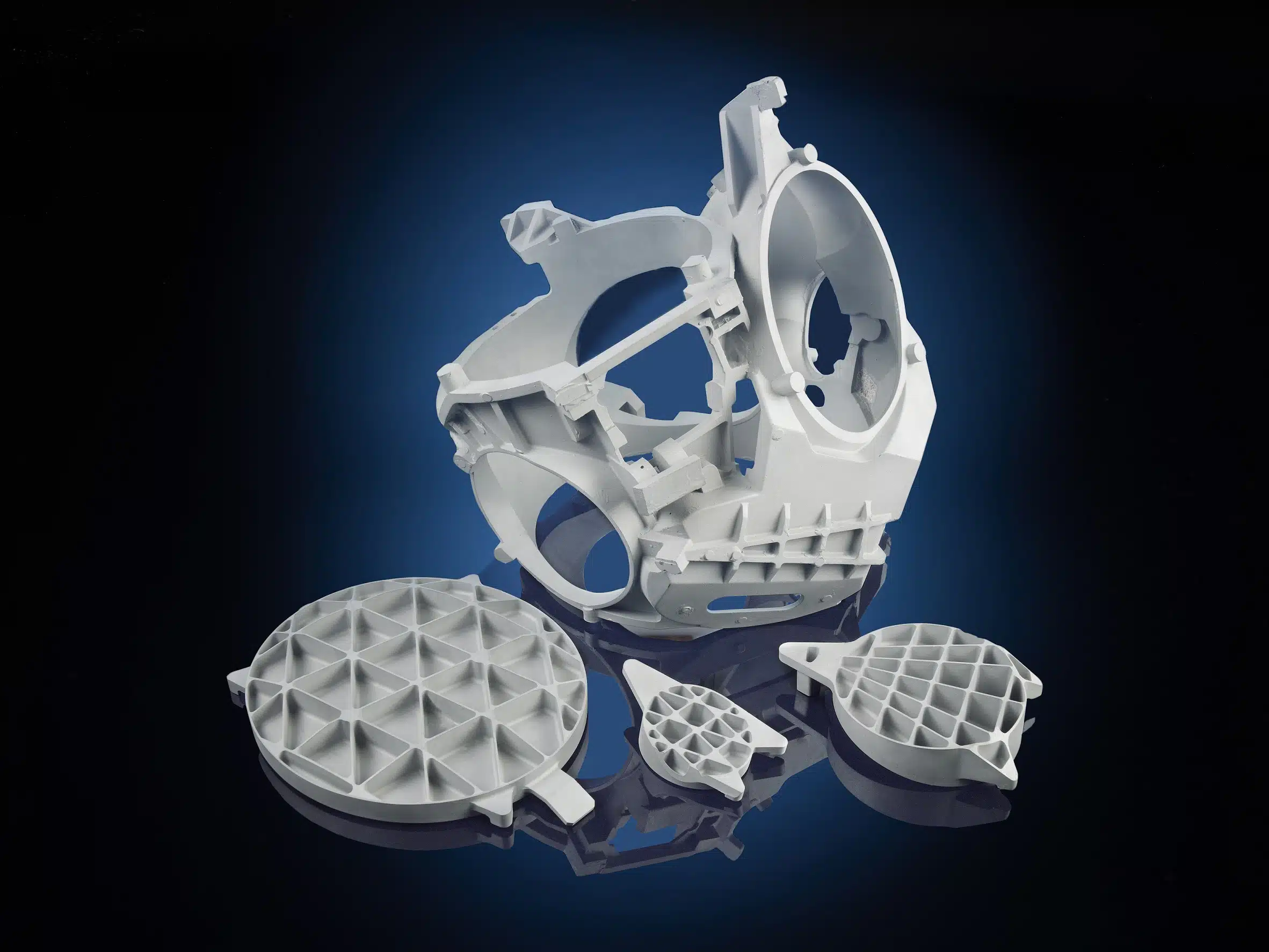
The particulate Silicon Carbide reinforcement in Aluminum Alloy Metal Matrix Composite enhances this lightweight material with improved mechanical property attributes for stiffness, vibration dampening, wear resistance, high thermal conductivity, and low coefficient of thermal expansion. With its unique set of properties MMC alloys have been employed in diverse applications such as moving structures in high speed equipment for manufacturing, brake rotors for vehicles, heat sinks for electronics and as housings & mirrors for optics.
In the 1980’s and 1990’s cast shapes from MMC ingot was envisioned to be a major enabling technology for manufacture of MMC metal components. This prompted the development of foundry processes and specialized techniques to overcome the natural tendency of the SiCp particles to clump or to precipitate from the aluminum matrix. The inherent abrasiveness of the Silicon Carbide particulates in the alloy, perhaps unfairly, also gave MMC a reputation of being difficult and expensive to machine. For a myriad reasons a broad market for cast and other process shapes has not developed and so despite its many attributes MMC remains an underutilized material option.
As it is with other difficult to machine materials, the near-net-shape capability Investment Casting is an effective counterbalance to help mitigate the cost for machining aluminum MMC. With effective casting designs this capability, combined with the refinements in the alloy and of the secondary machining, makes investment cast aluminum alloy / silicon carbide particulates a viable and affordable option for engineers to incorporate lightweight MMC shapes into their products.
